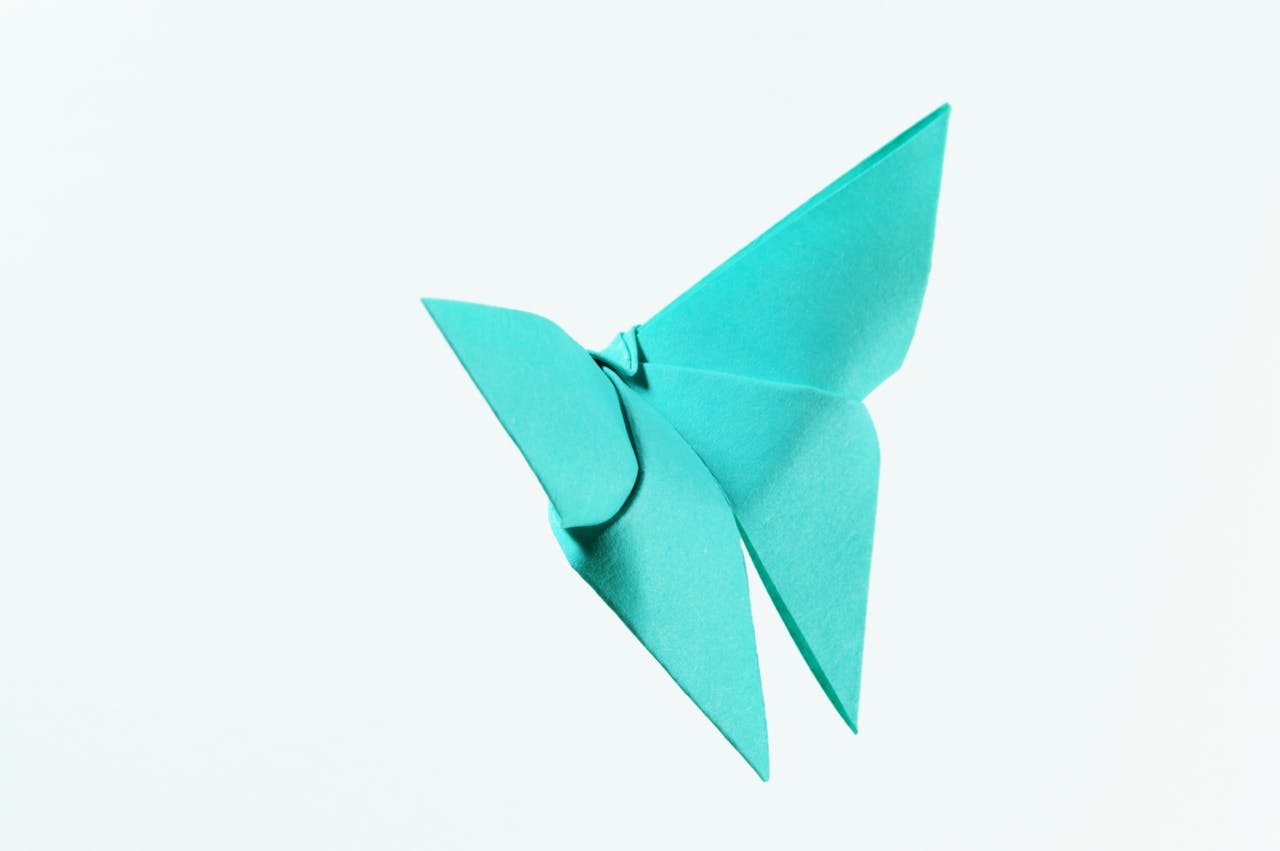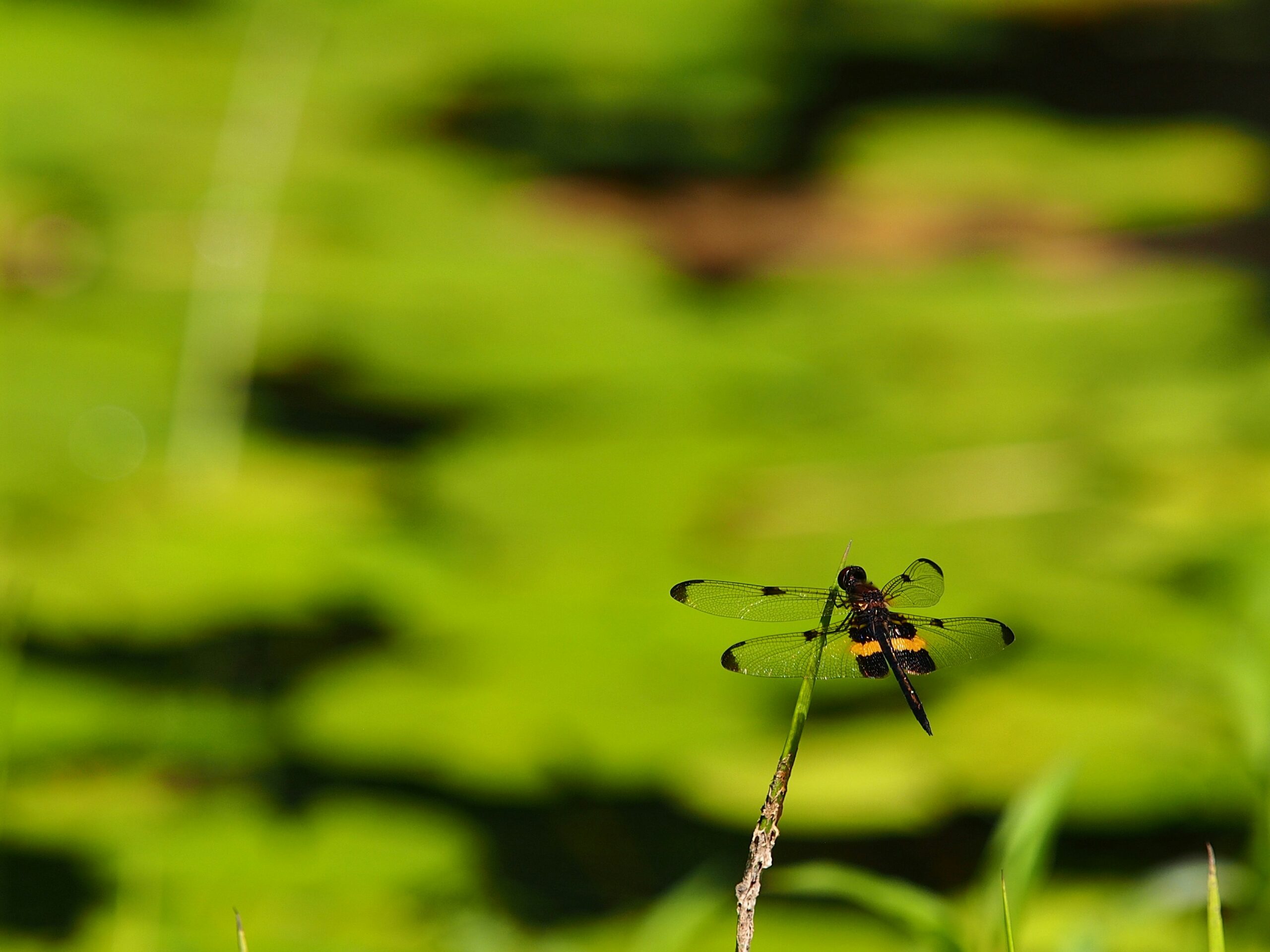Introduction to Pyntekvister
Pyntekvister is a captivating art form that revolves around the creation of intricate paper twists, often celebrated for their aesthetic appeal and creative flexibility. Originating from traditional crafting practices, pyntekvister has garnered attention across diverse cultures, inviting enthusiasts to engage with the medium in innovative ways. The beauty of this craft lies not only in the stunning final products but also in the simple yet profound process of creation itself.
At its core, pyntekvister represents a unique blend of artistry and playfulness, where the act of folding and twisting paper transforms ordinary sheets into exquisite sculptures or decorative items. The materials required for this craft are generally accessible—usually just sheets of paper and a touch of creativity. This accessibility is one of the aspects that makes pyntekvister immensely appealing; individuals of all ages and backgrounds can participate in the enjoyment of crafting and express their personal artistic visions.
The allure of pyntekvister extends beyond the tangible outcome; it embodies a meditative process that invites practitioners to immerse themselves in a state of flow. As one folds and twists the paper, attention is drawn away from the distractions of everyday life, offering a moment of tranquility and focus. Furthermore, this craft fosters creativity and boosts problem-solving skills, as each twist and turn presents an opportunity to experiment with patterns, colors, and shapes.
Ultimately, engaging in pyntekvister provides not only a sense of accomplishment but also a powerful medium for self-expression. Whether one seeks to create functional objects or purely decorative art, the joy found within this craft can be deeply fulfilling. Embracing the spirit of pyntekvister allows individuals to appreciate the beauty of simplicity and revel in their own creative journeys.
History and Origins of Paper Twists
The craft of paper twisting, known in some circles as pyntekvister, has a rich and varied history that spans cultures and continents. Its origins can be traced back to Europe, specifically during the 17th and 18th centuries. At that time, individuals sought new ways to enhance decorative aesthetics, whether for personal enjoyment or communal celebration. In these early days, the art of twisting paper was primarily a leisurely pastime, embraced by many as a form of creative expression.
As the popularity of this technique grew, it began to intersect with significant cultural celebrations. Pyntekvister was utilized to create eye-catching decorations for weddings, festivals, and holiday gatherings. The ability to manipulate paper into intricate shapes and colorful designs allowed artisans and hobbyists alike to personalize their celebratory events, weaving their creativity into the fabric of tradition.
During the 18th century, this decorative art form took a notable leap in terms of its significance. Not only was it widely practiced across various European nations, but it also began to evolve into a respected craft. Craftspeople started to hone their skills, focusing on the aesthetics and complexity of their designs. Celebratory occasions frequently featured beautifully crafted pyntekvister, transforming ordinary events into spectacular experiences through the delicate twists and shapes of paper.
As this art form spread to different parts of the world, it adapted according to local customs and materials, illustrating the versatility of paper twisting. Today, it is appreciated both as a historical craft and a modern decorative technique, engaging artists and enthusiasts who continue to explore its potential. Understanding the historical context of pyntekvister not only showcases its evolution but also enriches our appreciation for this graceful art form that has transcended time, maintaining relevance in various cultural contexts.
Essential Materials for Crafting Pyntekvister
Crafting pyntekvister involves a thoughtful selection of materials that can significantly influence the final outcome of your paper twists. To begin with, the foundation of your project is the paper itself. It is advisable to choose lightweight, flexible paper types such as origami paper, tissue paper, or cardstock. Each offers different qualities: origami paper is known for its vibrant colors and ease of folding, while cardstock provides sturdiness for more structured designs.
In addition to paper, other basic tools are crucial for the crafting process. A good pair of sharp scissors is essential, as precise cuts can enhance the intricacy of the pyntekvister. The use of a crafting knife can also be beneficial, especially for more complex designs that require detailed cutting. For joining multiple elements together, strong adhesive options such as glue sticks or liquid glue are recommended, as they provide a secure bond without adding undue bulk to the finished product.
When selecting materials, considerations regarding color and texture are of paramount importance. The combination of colors can evoke different moods and styles, so choosing hues that complement or contrast effectively can elevate the artistic appeal of your pyntekvister. Textured papers, such as linen or embossed varieties, can add depth and interest, enhancing the overall visual impact. Additionally, incorporating patterned papers can create dynamic designs, drawing the eye and contributing to the theme of the project.
Tools beyond the basics, such as bone folders for crisp creases and mat boards for stable working surfaces, can also enhance your crafting experience. By thoughtfully curating your materials, you will not only streamline the crafting process but also ensure the successful creation of visually appealing pyntekvister that represent your artistic vision.
Basic Techniques in Paper Twisting
Paper twisting is an engaging craft that allows for creativity and precision. To begin with, one requires high-quality paper strips that are suitable for crafting pyntekvister, as the choice of paper can significantly influence the final outcome. Start by cutting your paper into equal-width strips; widths of around 1 to 2 inches are generally recommended, as they provide a good balance of flexibility and sturdiness.
Once you have your strips ready, find a clean and flat workspace. Lay all your strips out so that each is easily accessible. Begin with selecting two strips – ideal for beginners is starting small. Take the first strip and hold one end in each hand. Start twisting the paper gently with even pressure, ensuring your twists are consistent throughout the length of the strip. An important aspect of creating successful pyntekvister is maintaining an even tension as you twist. If the pressure varies, the final product may have unintended slack or knots.
After achieving a satisfactory twist, fold the strip in half, creating a loop. This folded structure can then be secured by wrapping the ends together. Some crafters prefer to use glue for added security, but binding with an additional strip or using thread works effectively as well. As you practice, ensure your transitions between twists and folds are smooth to maintain a cohesive look. For enhanced precision, consider using a ruler to measure the length of your twists and a crafting mat to cut uniformly sized strips.
Maintaining these techniques will enable beginners to grasp the art of creating beautiful paper twists. Practice consistently, and over time, you will develop not only your skills but also a unique style that embodies your interpretation of pyntekvister.
Advanced Techniques for Unique Designs
Having grasped the fundamentals of pyntekvister, crafters can now embark on a journey to elevate their creations through advanced techniques. These methods not only enhance aesthetic appeal but also allow for personal expression. One of the most exciting elements in crafting pyntekvister is the variety of twisting methods available. Rather than sticking with standard twists, consider experimenting with variations such as the double helix or spiral twist. These techniques introduce depth and texture, giving each piece a unique character.
Layering is another effective approach in the art of pyntekvister. By utilizing multiple layers of paper, artisans can create intricate designs that stand apart from simpler styles. When applying this technique, ensure that the colors chosen for layering complement each other. For instance, pairing warm and cool tones can produce a visually striking contrast. Furthermore, one can incorporate patterns into the layers, such as stripes or polka dots, which can enhance the overall design and lend complexity.
Mixing colors is an essential aspect of advancing your pyntekvister skills. Consider employing a color wheel to identify harmonizing shades that can be integrated into your designs. Instead of limiting oneself to a single palette, experiment with gradients or ombre effects to make your craft more vibrant. Transitioning between colors not only attracts the eye but also elevates the sophistication of the final product. Utilizing metallic or textured papers will further enrich your work, allowing the shine or roughness to create an engaging visual contrast.
Ultimately, the commitment to refine techniques such as twisting, layering, and color mixing will lead to the production of unique pyntekvister creations. Embrace the journey of experimentation, as it is through such practices that personal style flourishes and mastery of the art is achieved.
Incorporating Pyntekvister into Home Decor
The versatility of pyntekvister allows for a broad range of creative applications in home decor, offering an easy way to infuse spaces with personalized flair. One of the most engaging methods to display these paper twists is by creating vibrant wreaths. By utilizing a variety of colors and patterns, individuals can craft seasonal wreaths that reflect their personal style or the time of year. Whether hung on a front door or adorned on an interior wall, these wreaths become stunning focal points in any setting.
Another popular way to showcase pyntekvister is through garlands. These can be strung across mantels, along staircases, or even in children’s rooms to create enchanting atmospheres. When forming a garland, consider alternating different shapes and sizes of twists, which not only adds depth but also visual interest. Enhancing the garland with additional embellishments, such as dried flowers or string lights, can create a captivating display that enchants visitors and family alike.
Centerpieces crafted from pyntekvister can also elevate the ambiance of dining or coffee tables. Consider placing a cluster of these decorative twists in a clear vase, allowing the light to accentuate their forms and colors. Alternatively, they can be used as accents among candles or floral arrangements. This blend of natural and crafted elements introduces a whimsical touch to everyday decor.
It is important to note that incorporating pyntekvister into your home decor is not merely about aesthetics; it is also about expressing individuality and creativity. By integrating handcrafted designs into their surroundings, homeowners can create inviting and unique spaces that reflect their personality. Thus, using these paper twists can significantly enhance your home, adding warmth and charm to any room.
Using Pyntekvister as Gift Wrapping or Adornments
Pyntekvister, the art of creating exquisite paper twists, serves as a unique and personal touch for gift wrapping, enhancing the overall presentation and sentiment of any gift. When used thoughtfully, these intricate paper twists can elevate a simple package into a beautifully adorned treasure. The use of pyntekvister in gift wrapping allows for creativity and personalization, making each gift special and memorable.
To incorporate pyntekvister into your gift wrapping, consider varying the colors and textures of your paper to create a stunning visual effect. You can select paper that complements the color scheme of the gift or aligns with an occasion. For instance, using pastel colors for a baby shower gift or vibrant shades for a birthday celebration can create a cohesive look. Once you have your base wrapped, crafting pyntekvister from contrasting paper can add depth and interest. These twists can be fashioned into bows, spirals, or simple accents that draw the viewer’s eye.
Moreover, pyntekvister can also be used effectively as adornments on gift bags or boxes. Instead of traditional ribbons, try adding a handcrafted twist of paper to the handle of a gift bag or securing it around the box with a unique knot. This small detail not only enhances the aesthetic quality of the presentation but also conveys a sense of care and effort put into the gift itself. Handmade decorations carry profound sentimental value, often tracing back to personal moments and relationships. By utilizing pyntekvister, you give gifts character and charm, making them feel more heartfelt.
In conclusion, the incorporation of pyntekvister in gift wrapping and as adornments creates a distinctive touch that elevates any occasion. Its versatility and elegance offer a splendid way to express creativity and sincerity through your gift-giving endeavors.
Tips for Success in Pyntekvister Crafting
Crafting beautiful pyntekvister requires not only creativity but also an understanding of techniques that contribute to the overall success of the project. Here are several tips that can enhance your crafting experience and the quality of your finished products.
First and foremost, avoid common mistakes that oftentimes lead to frustration. One frequent error is underestimating the importance of precise measurements. Whether you are cutting paper strips or estimating the length of twists, precision is key. Utilizing a ruler can help you achieve uniformity in size, leading to aesthetically pleasing results. Additionally, ensure that your paper is crisp and clean; wrinkled or damaged paper can detract from your creations and may obstruct the twisting process.
Another important aspect is the organization of your materials. Designate a specific area for your crafting sessions, and keep all necessary supplies—such as scissors, glue, and various paper colors—within arm’s reach. Consider using storage bins or organizers to keep your materials sorted. This not only saves time but also helps maintain focus, allowing for a more enjoyable crafting experience.
Time-saving tricks can also greatly enhance your pyntekvister crafting. For example, pre-cutting multiple strips before you start twisting can expedite the process. This approach allows you to concentrate on the actual crafting without interruption. Furthermore, practicing basic twisting techniques can lead to quicker and more consistent results over time. As you become more comfortable with these skills, you will find that the speed of your work increases significantly.
Lastly, do not hesitate to experiment with different paper types and colors. Sometimes the most stunning pyntekvister arise from unexpected combinations. Allow your creativity to flourish and remember that practice is essential in mastering the art of crafting. By following these tips, you can improve your skills and ultimately enjoy the process of creating beautiful paper twists.
Conclusion: Unleashing Your Creativity with Pyntekvister
Throughout this exploration of pyntekvister, we have delved into the intricate and rewarding art of creating beautiful paper twists. This technique not only engages the mind but also allows for expressive freedom, encouraging individuals to experiment with colors, patterns, and shapes. Whether you are a seasoned artist or a novice craft enthusiast, embracing this form of artistry can provide numerous benefits, including fostering creativity and enhancing fine motor skills.
As you reflect on the various methods and styles discussed, consider how you can incorporate these elements into your own projects. The beauty of pyntekvister lies in its versatility; you can adapt techniques to suit your personal tastes and the occasions you are celebrating. From delicate embellishments for gifts to eye-catching decorations for events, the possibilities are endless. Remember, crafting is not just about the final product, but the joy found in the process.
Sharing your creations with others can also heighten the sense of community and connection within the crafting world. Whether through social media platforms, local crafting groups, or community events, showcasing your pyntekvister art can inspire others and elevate the collective appreciation for this craft. Additionally, engaging with other creators presents an opportunity for collaboration and learning, allowing for growth in your artistic journey.
Embrace the value of artistic expression and let your creativity flourish. The world of pyntekvister awaits your unique interpretation. Continue to explore, experiment, and expand your skill set, knowing that crafting beautiful paper twists is not just a hobby but a meaningful avenue for self-expression. Your journey in the arts may be just beginning, and with each twist of paper, you are adding to your story as an artist.

We share information about current trends and stories of people all around the world.



